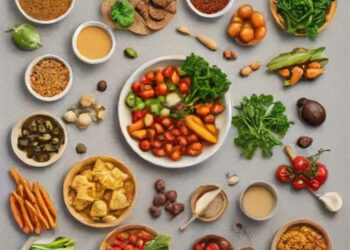By B Swaminathan (publisher@chefbharath.com)
Even as vegan foods are gaining popularity in India, milk and other dairy products continue to be major sources of nutrition for our populace. Indian people are so used to feeding milk right from a new-born to senior citizens to make them more healthy and stronger.
With dairy products here to stay, ChefBharath had an interaction with Shashi Kumar Menon, Chief Executive Officer of Muralya Dairy Products, from Thiruvananthapuram. He answered all our queries on the dairy market trends, and then some. Mr Menon was also forthcoming in clarifying and demystifying a lot of our doubts about the milk we consume.
Here’s presenting Mr Menon’s views:
CB: What are the recent trends in milk consumption among Indian consumers?
SKM: The Food Safety and Standards Authority of India (FSSAI) has recommended fortification of milk, which is the addition of Vitamin A & D, along with other essential daily food products. This is a major initiative aimed at improving the health and well-being of the existing population as well as for bridging the nutritional gap among children at a low cost.
Organic milk and farm produce is yet another trend that is gaining popularity, especially in metros. We will soon see more of flavoured milk, milk shakes, etc., on the shelves as the market matures. Multiple variants of milk will play a significant part in the years to come and plain liquid milk volumes which are currently used primarily as a health drink and as a dairy creamer for tea/coffee will be challenged.

CB: What is the key difference you notice in milk buying patterns in India and other countries?
SKM: In India, we mostly see toned milk (5-6 per cent of fat) as the most preferred variant. Double toned or skimmed milk as a category is a very small segment either for use in tea/coffee or other beverages or for giving to children or adults as a drink.
In western countries and Australia, you can see that the supermarket shelves are primarily filled with low fat, skimmed and zero fat milks with full cream occupying a comparatively lesser space. It can also be observed that there is a lot of lactose-free milk, fibre-enriched milk, Omega-3 milk, etc. Milk with functionality is the product portfolio norm in those regions. Flavoured milks with banana, chocolate, vanilla, etc. are consumed especially by school-going children daily.
Another significant pattern of consumer behaviour is that most of the milk bought in other countries is consumed cold. Cold milk is used for tea/coffee servings as well as for breakfast cereals. In India because of improper cold chain management , consumers are used to boiling milk before consuming it to be on the safer side.
It is also interesting that consumption of milk is higher in western countries than in India. In those countries, a family pack is a 2-litre / gallon pack, whereas in India it is a 1-litre bottle / pack is the norm.
CB: There is an increasing trend among youngsters to start cafes / restaurant outlets in our country. How do you view this trend impacting rural India?
SKM: Cafes are social gathering places to hang out, which are gaining popularity all over the world, and India is no exception. Everywhere we can see new innovative chai and coffee preparations and interesting décor ideas to entice people to come sit and enjoy a beverage with their friends.
This chilling-out attraction of cafés has put a lot of pressure on entrepreneurs to innovate and come up with exciting original ideas such tea in a waffle cup, which can be also eaten. This also reduces paper / plastic waste and is environment-friendly.
Each rural part of India has its own intrinsic beauty and culture, which can be seen utilized whilst travelling. I believe that youth are more tuned to the pulse of the times and they will be able to bring in passion and energy into such cafés. With the exception of a few national players, the café business is largely in the hands of entrepreneurs, which is good.
CB: With respect to milk procurement, what challenges do milk manufacturers face in the Hotels, Restaurants and Cafés (HoReCa) segment in India?
SKM: HoReCa, since the Covid era, is going through an upheaval in terms of low demand to ups and downs in their business cycle. Every time cases go up, business suffers. This means that demand planning gets affected significantly . This impacts on milk manufacturers, who are dependent on HoReCa business, as milk is a perishable product with two days shelf life.
When orders get cancelled at a short notice, it puts tremendous pressure on the manufacturers.

CB: How good is your institutional sales and what are the plans of Muralya to increase your percentage in institutional sales?
SKM: A lot of institutional sales is price-dependent and because of our quality, we do not encourage businesses that do not meet our expected returns. Having said that, we have discerning institutions like five-star hotels, flight catering kitchens and event caterers, who are our regular Institutional customers.
Our sales are primarily end consumer-driven from a retail perspective and less of B2B.
CB: Has the emerging concept of vegan foods started impacting the dairy industry as a whole? As an industry leader, how do you see this?
SKM: Animal protein-free milk that is nutritionally identical to protein from cow milk and tastes exactly the same has been claimed to be developed. This is a new and interesting concept for consumers and the dairy industry as a whole.
But we need to understand that plant-based beverages are encroaching on the term ‘milk’, which strictly speaking does not conform to the Codev Alimentarius International Food code, jointly owned by the FAO, WHO & FSSAI. This matter is under appeal with the FSSAI.
However, real milk is a naturally superior complete superfood with 100-150 per cent more nutrition than plant-based beverages. Other than proteins, real milk also contains healthy fats and many micro nutrients.
All of this goodness of natural milk is made available at a maximum cost of Rs 58 per litre, whereas plant-based beverages are priced upwards of Rs 250 per litre. Also, many such beverages contain stabilisers, thickeners, artificial flavours and several processing steps, which are further away from nature. In a country like India, we also have to remember that dairy industry is a means of livelihood for a lot of farmers and such changes will also bring about a significant impact in their lives and economy.
There are around 10 crore landless and marginal farmers with herds of only 2-3 cattle, who earn a daily living through the dairy industry and we are still an agrarian economy. A farmer who produces milk gets between 70 – 85 per cent of the price of milk, whereas in the case of plant-based beverages like soy based milk, the farmer gets only 15 per cent.
The key difference is that the dairy farmer is an owner vis-à-vis the soy farmer who is only a supplier. Based on all the above points, it will take some time for the dairy industry to change over on a mass scale, but there is bound to be some impact in the niche products development and sales areas.
Advertisement: Muralya is a proud customer of Neural Networks. We are Kerala’s leading solution providers for Cloud based IT infrastructure solutions, Servers & Storages, Networking Solutions, Security Solutions, and Backup solutions. Visit http://neuralebiz.com/







